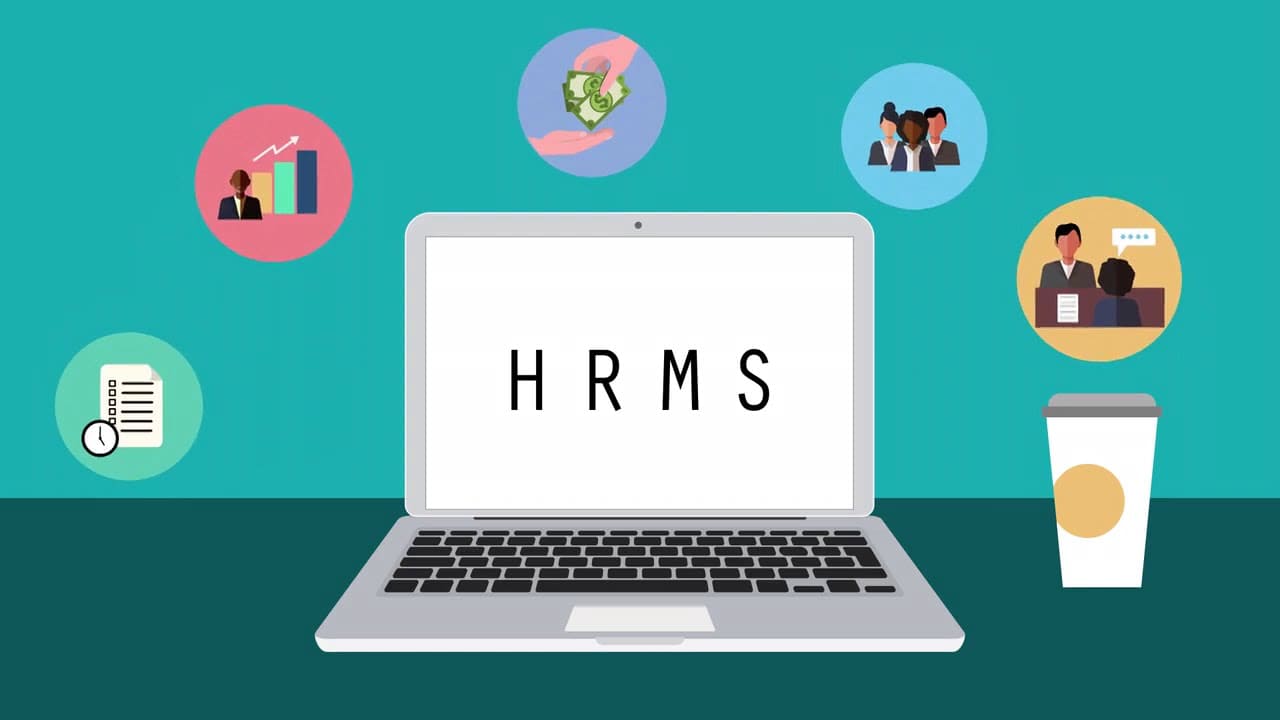In today’s competitive business landscape, small and medium-sized enterprises (SMEs) face numerous challenges to streamline their operations and stay ahead. One critical area that often requires attention is human resources management (HRM). Efficient HR management is essential for maintaining a productive workforce, ensuring compliance with labor laws, and optimizing costs. HRMS software, specifically designed for SMEs, offers a comprehensive solution to address these needs.
Table of Contents
HRMS Software: A Basic Understanding
HRMS software, or human resource management system, is a digital platform that automates various HR functions. It centralizes employee data, simplifies payroll processing, manages time and attendance, and facilitates recruitment and onboarding. For SMEs, such a tool can be a game-changer, providing efficiency, accuracy, and cost-effectiveness.
HRMS Software: Key Benefits for SMEs
1. Streamlined Payroll Processing:
-
- Accuracy: HRMS software ensures precise calculations of salaries, deductions, and benefits, minimizing errors and reducing the risk of penalties.
- Efficiency: Automation eliminates manual data entry and calculations, saving time and resources.
- Compliance: The software helps businesses stay compliant with tax regulations and labor laws.
2. Employee Data Management:
-
- Centralized Database: A centralized repository stores employee information, including personal details, employment history, and performance records.
- Easy Access: Authorized personnel can access employee data quickly and securely.
- Data Security: Robust security measures protect sensitive employee information.
3. Time and Attendance Tracking:
-
- Accurate Timekeeping: Automated time and attendance tracking prevents disputes and ensures accurate payroll calculations.
- Productivity Insights: Analyzing time data helps identify trends and improve workforce productivity.
- Attendance Management: Absenteeism and leave management are simplified, reducing administrative overhead.
4. Recruitment and Onboarding:
-
- Job Posting: Easily post job openings on multiple platforms.
- Applicant Tracking: Manage applicant applications, interviews, and assessments efficiently.
- Onboarding Automation: Streamline the onboarding process with digital paperwork and welcome packages.
5. Performance Management:
-
- Goal Setting: Establish clear performance goals and expectations.
- Performance Reviews: Conduct regular performance reviews to assess employee contributions and identify areas for improvement.
- Employee Development: Identify training needs and support employee growth.
6. Compliance Management:
-
- Labor Law Adherence: Stay up-to-date with labor laws and regulations.
- Compliance Audits: Conduct regular audits to ensure compliance and mitigate risks.
7. Enhanced Employee Experience:
-
- Self-Service Portal: Employees can access their pay stubs, benefits information, and leave requests through a user-friendly portal.
- Improved Communication: HRMS can facilitate effective communication between employees and management.
- Increased Engagement: A positive employee experience can lead to higher job satisfaction and reduced turnover.
8. Cost-Effective:
-
- Reduced Administrative Costs: Automation eliminates manual tasks, saving time and money.
- Improved Efficiency: Streamlined processes result in increased productivity.
- Scalability: HRMS software can grow with your business, avoiding the need for costly manual solutions.
HRMS Software: SME Payroll, A Deep Dive into a Powerful HRMS Solution
SME Payroll, a comprehensive HRMS solution designed specifically for small and medium-sized enterprises, offers a wide range of features to streamline HR processes and enhance operational efficiency. Here’s a more detailed look at some of its key functionalities:
1. Payroll Processing
- Accurate Calculations: SME Payroll ensures precise calculations of salaries, deductions, and benefits, minimizing errors and reducing the risk of penalties.
- Tax Compliance: The software automatically updates with changes in tax laws and regulations, ensuring compliance and avoiding costly penalties.
- Multiple Pay Structures: Easily manage different pay structures for hourly, salaried, and commission-based employees.
- Direct Deposit: Set up direct deposit for employee paychecks, reducing administrative overhead and ensuring timely payments.
2. Employee Self-Service
- Employee Portal: Employees can access their pay stubs, leave balances, and other HR information through a secure online portal.
- Leave Management: Employees can request and track leave requests, reducing administrative burden for HR departments.
- Time Off Accrual: Automatically track and manage employee time off accruals, ensuring accurate leave balances.
3. Time and Attendance
- Time Tracking: Accurately track employee work hours using various methods, including biometric devices, time clocks, and mobile apps.
- Overtime Management: Automatically calculate overtime pay and ensure compliance with labor laws.
- Absence Management: Track employee absences, including sick leave, vacation, and other absences.
4. Recruitment and Onboarding
- Job Posting: Easily create and post job openings on multiple platforms.
- Applicant Tracking: Manage applicant applications, interviews, and assessments efficiently.
- Onboarding Automation: Streamline the onboarding process with digital paperwork and welcome packages.
5. Performance Management
- Goal Setting: Establish clear performance goals and expectations for employees.
- Performance Reviews: Conduct regular performance reviews to assess employee contributions and identify areas for improvement.
- Employee Development: Identify training needs and support employee growth.
6. Compliance Management
- Labor Law Adherence: Stay up-to-date with labor laws and regulations.
- Compliance Audits: Conduct regular audits to ensure compliance and mitigate risks.
- Reporting: Generate various reports to track compliance metrics and identify potential issues.






















Leave feedback about this